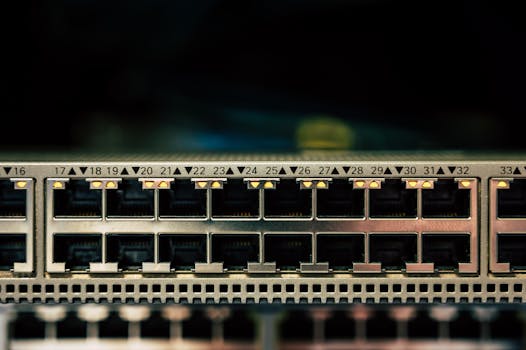
MEO Satellites: The Future of Global Connectivity – MEO Satellites are an essential part of the telecommunications industry, providing global connectivity and high-speed data transfer. Medium Earth Orbit (MEO) satellites are a type of satellite that orbits the Earth at an altitude of approximately 2,000 to 36,000 kilometers, which is higher than Low Earth Orbit (LEO) satellites but lower than Geostationary Orbit (GEO) satellites.
MEO satellites have several benefits, including lower latency, higher bandwidth, and better coverage than traditional GEO satellites. They are also less prone to interference and have a longer lifespan than LEO satellites. These advantages make MEO satellites an attractive option for a wide range of applications, including telecommunications, navigation, and Earth observation.
One of the most significant advantages of MEO satellites is their ability to provide global coverage with a relatively small number of satellites. This is because MEO satellites have a larger footprint than LEO satellites, which means they can cover a larger area with a single satellite. Additionally, MEO satellites can be used to provide high-speed data transfer, making them ideal for applications such as broadband internet, video streaming, and online gaming.
In recent years, there has been a significant increase in the development and launch of MEO satellites. Several companies, including O3b Networks, SES, and Intelsat, have launched MEO satellite constellations, which are a group of satellites that work together to provide global coverage. These constellations have the potential to revolutionize the telecommunications industry by providing high-speed, low-latency connectivity to remote and underserved areas around the world.
Another benefit of MEO satellites is their ability to provide connectivity in areas where traditional fiber optic cables are not available. This is particularly important in rural and remote areas, where access to high-speed internet is often limited. MEO satellites can provide a cost-effective and efficient way to bring high-speed internet to these areas, which can have a significant impact on economic development and social welfare.
In addition to their use in telecommunications, MEO satellites are also being used for navigation and Earth observation. For example, the European Space Agency’s (ESA) Galileo satellite navigation system uses MEO satellites to provide accurate and reliable navigation signals. Similarly, the NASA’s Landsat 8 satellite uses MEO orbit to provide high-resolution images of the Earth’s surface.
Despite the many benefits of MEO satellites, there are also some challenges associated with their use. One of the main challenges is the high cost of launching and operating MEO satellites. Additionally, MEO satellites are subject to interference from other satellites and terrestrial systems, which can affect their performance and reliability.
In conclusion, MEO satellites are an essential part of the telecommunications industry, providing global connectivity and high-speed data transfer. Their unique benefits, including lower latency, higher bandwidth, and better coverage, make them an attractive option for a wide range of applications. As the demand for high-speed internet and global connectivity continues to grow, the use of MEO satellites is likely to increase, providing new opportunities for economic development and social welfare.
The future of MEO satellites looks promising, with several new constellations and technologies being developed. For example, the use of advanced propulsion systems, such as electric propulsion, is being explored to reduce the cost and increase the efficiency of MEO satellite launches. Additionally, the development of new antenna technologies, such as phased arrays, is being used to improve the performance and capacity of MEO satellites.
Overall, MEO satellites are playing a critical role in the development of the telecommunications industry, and their use is likely to continue to grow in the coming years. As the industry continues to evolve, it will be important to address the challenges associated with MEO satellites, such as cost and interference, and to develop new technologies and innovations to improve their performance and reliability.
Several sections can be defined for a deeper understanding of the MEO Satellites: Introduction to MEO Satellites, Benefits and Applications of MEO Satellites, Challenges and Limitations of MEO Satellites, Future of MEO Satellites, and Conclusion.
For a deeper analysis of the subject: The Introduction to MEO Satellites section would provide an overview of the history and development of MEO satellites, including their evolution from traditional GEO satellites. This section would also discuss the key characteristics of MEO satellites, such as their orbit, frequency, and coverage area.
The Benefits and Applications of MEO Satellites section would discuss the advantages of MEO satellites, including their lower latency, higher bandwidth, and better coverage. This section would also explore the various applications of MEO satellites, such as telecommunications, navigation, and Earth observation.
The Challenges and Limitations of MEO Satellites section would discuss the challenges associated with the use of MEO satellites, such as cost, interference, and reliability. This section would also explore the limitations of MEO satellites, such as their limited capacity and coverage area.
The Future of MEO Satellites section would discuss the future developments and trends in the use of MEO satellites. This section would explore the new technologies and innovations being developed to improve the performance and reliability of MEO satellites, such as advanced propulsion systems and new antenna technologies.
The Conclusion section would summarize the key points and findings of the article, and provide a final thought on the importance and potential of MEO satellites in the telecommunications industry.
